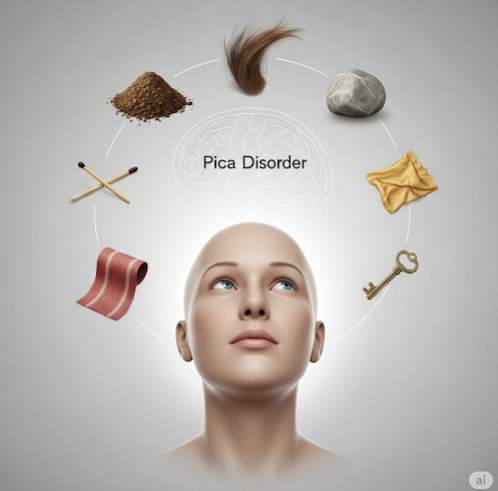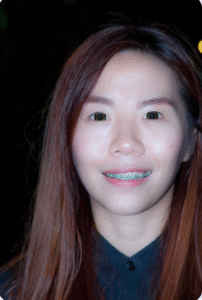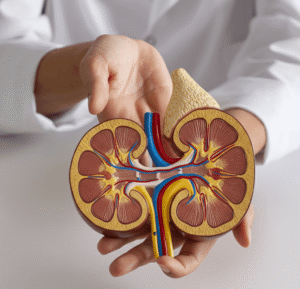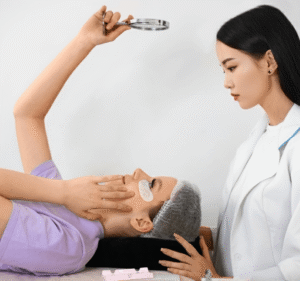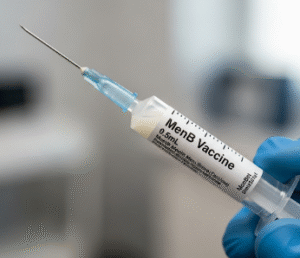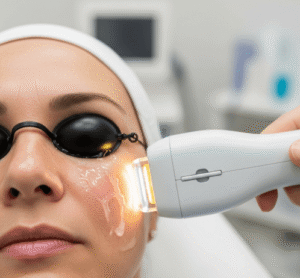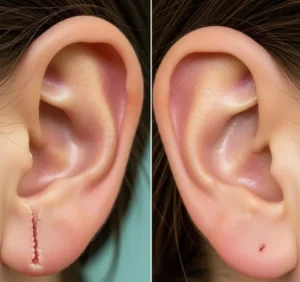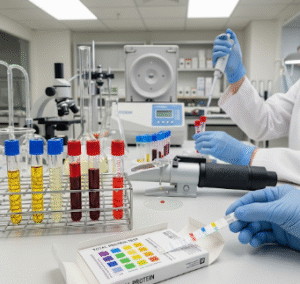Overview
Pica is a psychological disorder characterized by the persistent craving and compulsive consumption of non-nutritive, non-food substances over a period of at least one month. These substances may include items such as dirt, clay, paper, chalk, hair, or paint. Pica is most commonly observed in children, pregnant women, and individuals with developmental disabilities, but it can affect people of all ages. Left untreated, it may lead to serious medical complications including poisoning, intestinal blockages, or infections.
What is Pica Disorder?
Pica is classified as an eating disorder under the Diagnostic and Statistical Manual of Mental Disorders (DSM-5). Unlike occasional exploratory behavior in young children, pica involves a persistent and repetitive pattern of eating items that are not considered food and have no nutritional value. The behavior is developmentally inappropriate and cannot be explained by cultural or social norms. In some cases, pica may be linked to nutritional deficiencies or coexisting mental health conditions.
Commonly ingested substances include:
- Dirt or soil (geophagia)
- Ice (pagophagia)
- Hair (trichophagia)
- Chalk, paint, or plaster
- Soap or laundry starch
- Clay or sand
- Paper or cardboard
- Metal or coins
Symptoms
Signs and symptoms of pica may vary depending on the ingested substances, but common indicators include:
- Persistent craving for and consumption of non-food items
- Stomach pain or cramping
- Digestive issues such as constipation or diarrhea
- Lead poisoning symptoms (fatigue, irritability, vomiting, developmental delays)
- Malnutrition or weight loss
- Anemia (especially in cases of ice or clay consumption)
- Dental damage or erosion
- Social withdrawal or embarrassment over behavior
Causes
The exact cause of pica is not fully understood, but it is believed to be influenced by a combination of biological, psychological, and environmental factors, including:
- Nutritional deficiencies: Especially iron or zinc
- Pregnancy: Hormonal changes may trigger unusual cravings
- Developmental disorders: Common in individuals with autism, intellectual disability, or schizophrenia
- Stress or trauma: Can lead to coping behaviors like pica
- Cultural practices: In some societies, ingestion of clay or earth is considered medicinal
- Neglect or lack of supervision in children or institutionalized individuals
Risk Factors
Factors that may increase the likelihood of developing pica include:
- Age (most common in children under 6)
- Pregnancy
- Nutritional deficiencies (especially iron and zinc)
- Intellectual disabilities or developmental disorders
- Mental health conditions such as OCD or schizophrenia
- Poverty or poor access to nutrition
- Cultural or familial exposure to similar behaviors
Complications
Pica can lead to serious health issues depending on the type and quantity of substances consumed:
- Poisoning (e.g., lead or chemical ingestion)
- Intestinal obstruction or perforation
- Choking hazard
- Infections (parasitic or bacterial from soil or feces)
- Dental injuries
- Malnutrition due to interference with proper food intake
- Behavioral or social problems, especially in school-aged children
- Organ damage, in extreme or untreated cases
Prevention
Preventing pica involves identifying risk factors early and addressing underlying causes:
- Ensure adequate nutrition, especially iron and zinc intake
- Monitor children and individuals with developmental disabilities closely
- Provide proper supervision in institutional settings
- Offer sensory stimulation alternatives (e.g., safe chewing toys for children with autism)
- Educate caregivers and parents about the dangers of pica
- Address emotional and psychological needs through counseling or support
- Treat underlying conditions (mental health or developmental disorders)
Treatment Options in Korea
South Korea provides comprehensive, multidisciplinary care for eating disorders like pica, with access to both psychological and medical treatment options. These include:
- Medical evaluation: Blood tests to identify and treat nutritional deficiencies or toxic exposure
- Psychological therapy: Cognitive Behavioral Therapy (CBT) is widely used to modify harmful behaviors and thought patterns
- Behavioral interventions: Especially effective for children and individuals with developmental conditions
- Family-based therapy: Involving caregivers in structured behavior modification plans
- Occupational therapy: To address sensory-seeking behavior in patients with autism or intellectual disabilities
- Medication: If pica is linked to obsessive-compulsive behavior or anxiety, SSRIs or other medications may be prescribed
- Hospital-based programs: Large hospitals such as Seoul National University Hospital, Asan Medical Center, and Yonsei Severance offer specialized pediatric and psychiatric care for eating disorders
- Dietary counseling: Nutritionists help correct deficiencies and guide healthy eating behaviors
- Integrated care for foreigners: Many top hospitals provide interpreter services and English-speaking specialists, ensuring accessible treatment for international patients
With Korea’s advanced mental health services, patients with pica can receive timely diagnosis, effective behavioral support, and long-term care to prevent recurrence and improve overall well-being.

